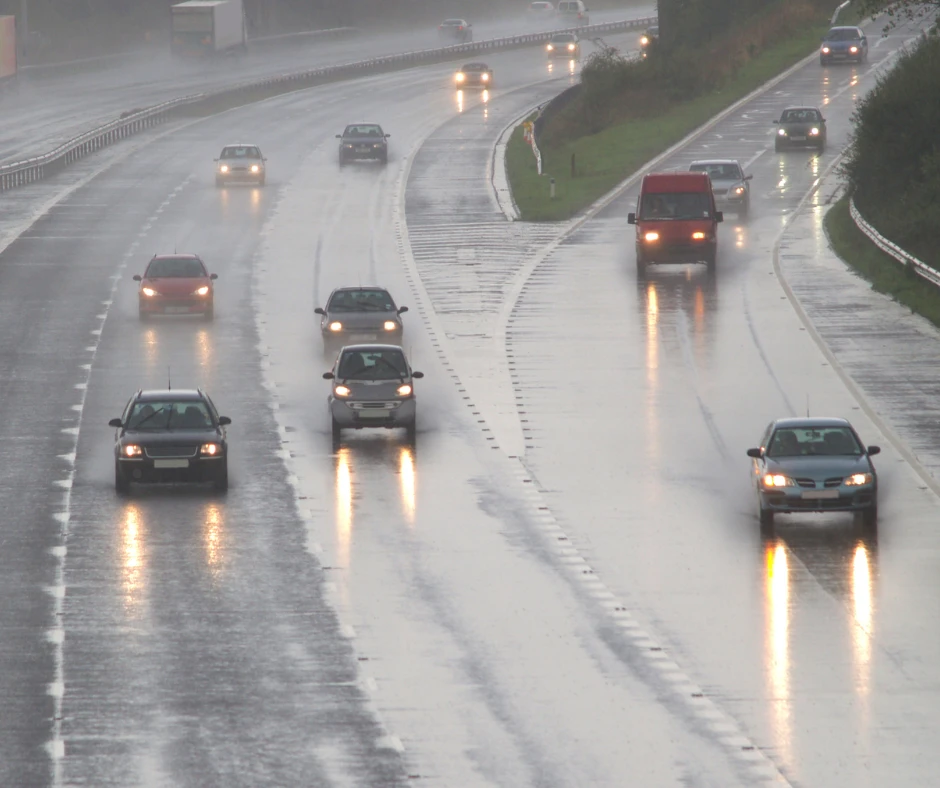Posted on Friday, October 24th, 2025 at 11:37 am
As the rainy season begins, wet roads and poor visibility can turn even a short commute into a challenge. Preparing your vehicle (and your driving habits!) can make all the difference in staying safe as the weather turns. Below, Tiemann Law Firm shares practical tips for navigating rainy conditions with confidence.

How Rain Affects Driving
Rain can significantly change the way your vehicle handles on the road. Wet pavement reduces tire traction, making it easier to skid or hydroplane, especially when rain first starts and oil from the road mixes with water.
Visibility also decreases as windshield fog, glare from headlights, and heavy rainfall obscure your view. These factors make it harder to stop quickly, judge distances, and stay in control, which is why extra caution is key during the rainy season.
1. Inspect Your Tires
Your tires are your first line of defense against slippery roads. Check their tread depth and look for uneven wear or bald spots, which can lead to hydroplaning—where your tires lose contact with the road surface. Also, make sure they’re properly inflated, as low tire pressure reduces traction on wet pavement.
2. Replace Worn Wiper Blades
Clear visibility is crucial during rain. If your wiper blades leave streaks, skip, or make squeaking noises, it’s time for a replacement. Keep your windshield washer fluid topped off, too. It’s a small maintenance step that makes a big difference when sudden downpours hit.
3. Test Your Lights
Rain reduces visibility for you and other drivers, so check all your vehicle lights: headlights, brake lights, tail lights, and turn signals. Use your headlights anytime it’s raining, even during the day. It helps you see better and ensures other drivers can see you, too.
4. Check Your Brakes
Wet roads make it harder to stop quickly. If you notice any grinding, squealing, or longer stopping distances, have your brakes inspected by a mechanic. Reliable brakes are crucial for safe driving in the rain.
5. Slow Down and Increase Following Distance
Even the best-maintained car can skid if you’re driving too fast for conditions. Reduce your speed and keep extra distance between you and the vehicle ahead. This gives you more time to react and prevents rear-end collisions — one of the most common types of accidents in rainy weather.
6. Watch for Standing Water
Avoid driving through deep puddles or flooded streets. Water can hide potholes, damage your engine, or cause hydroplaning. If you can’t gauge the depth, find an alternate route.
Stay Safe This Rainy Season
The safest drivers are the ones who adjust their habits in these conditions. A few minutes of preparation can help you stay safe and confident behind the wheel when the rain starts to fall.
If you or a loved one has been the victim of an accident on the road, contact the personal injury attorneys of Tiemann Law Firm to set up a free, same-day consultation at (916) 999-9000.


